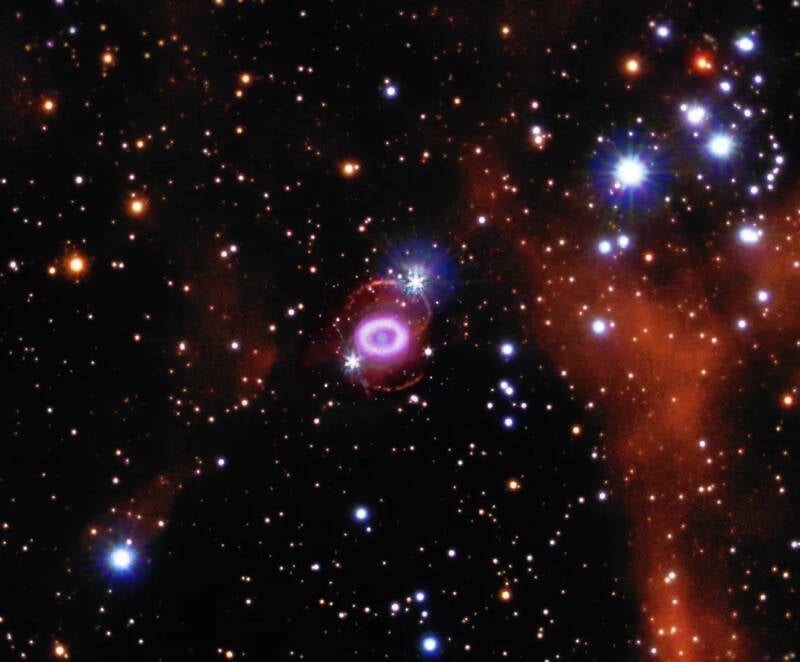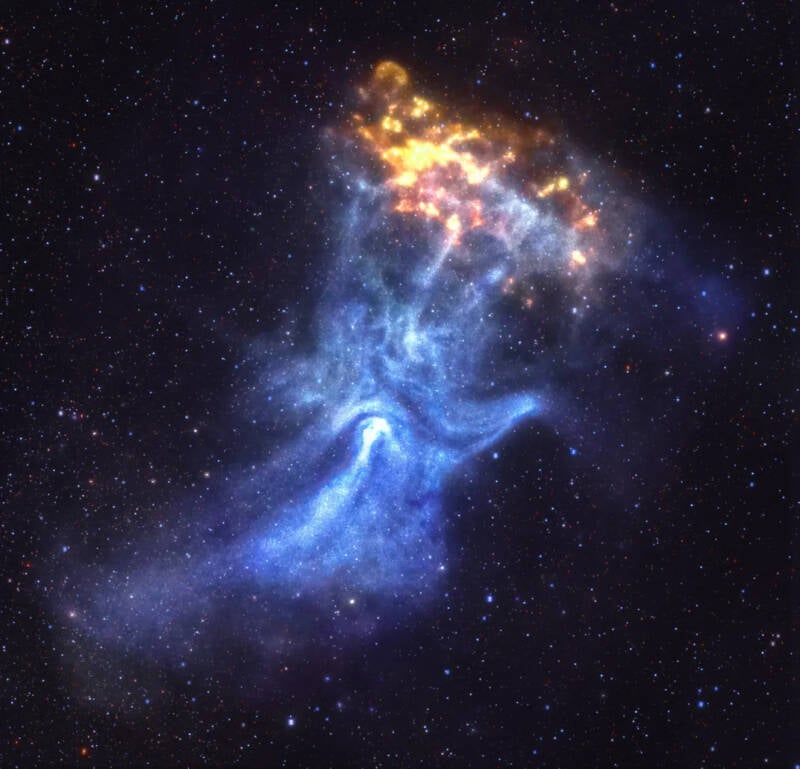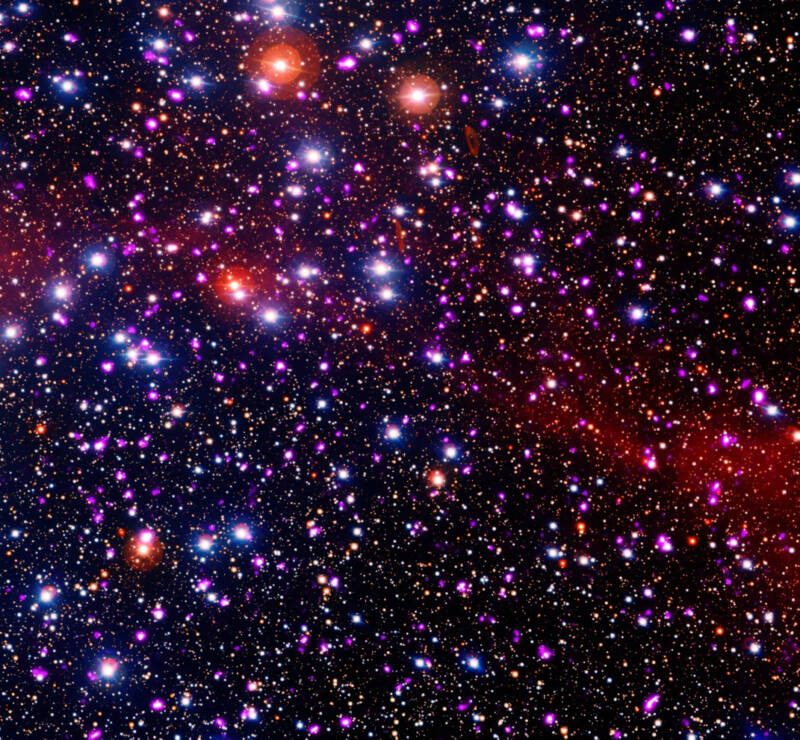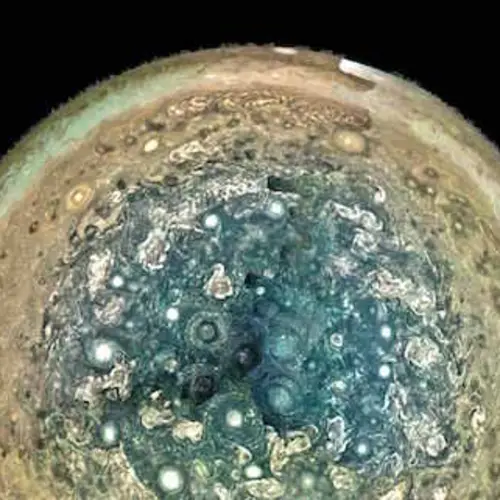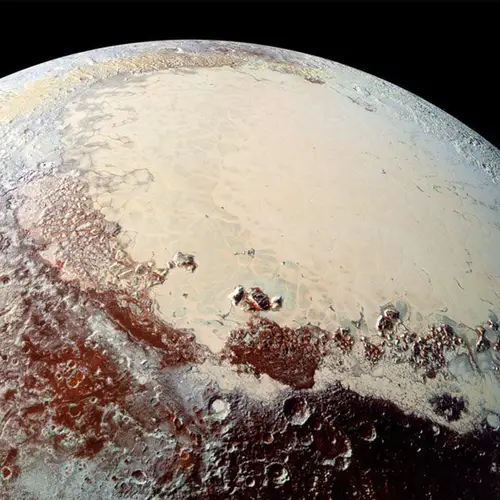These astounding images, taken by the Chandra X-Ray Observatory and released by NASA on the telescope's 25th birthday, show the otherworldly beauty of our universe.
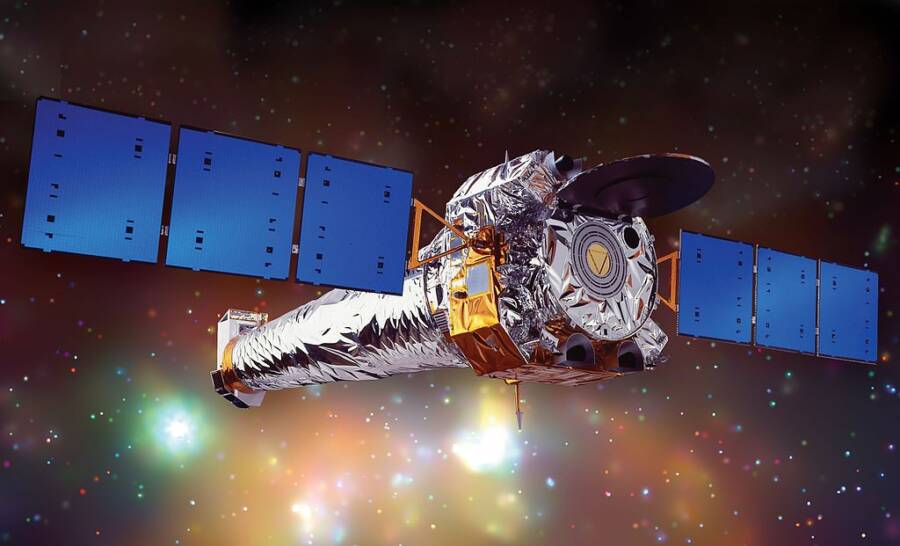
NASAAn artist’s illustration of the Chandra X-ray Observatory.
To celebrate the 25th birthday of NASA’s Chandra X-ray Observatory, the most powerful X-ray telescope ever built, the agency has released 25 never-before-seen images taken by the device on its decades-long space journey.
Since its release into space in 1999, Chandra has captured nearly 25,000 observations of our universe using advanced X-ray technology. Through this process, Chandra has documented exploding stars, galaxy collisions, black holes, and planets beyond our solar system.
Dive into some of the astonishing images Chandra has captured throughout the years.
The Chandra X-Ray Observatory Begins Its Journey In Space

NGSTResearchers conduct a final test on Chandra before preparing it for space travel.
In 1976, astrophysicists Riccardo Giacconi and Harvey Tananbaum first proposed the idea of Chandra. The researchers believed that building a powerful X-ray telescope would prove invaluable to the study of our universe.
After years of designing and testing, the Chandra X-ray Observatory was finally completed in mid-1999. The research crew responsible for the project named the device in honor of the late astrophysicist and Nobel laureate Subrahmanyan Chandrasekhar.
On July 23, 1999, researchers loaded Chandra onto the space shuttle Columbia and launched it into space. The space shuttle's crew then released the telescope into its elliptical orbit around the Earth.
As it orbited the planet in the last 25 years, Chandra sent NASA data about different galactic objects and events captured using the telescope's remarkably advanced X-ray technology.
Not long after its launch, Chandra documented Cassiopeia A, the youngest known supernova remnant in the Milky Way. And as time went on, Chandra continued to send researchers images that redefined what we know about the universe.
Chandra's Technology Reveals Fascinating Information About The Cosmos
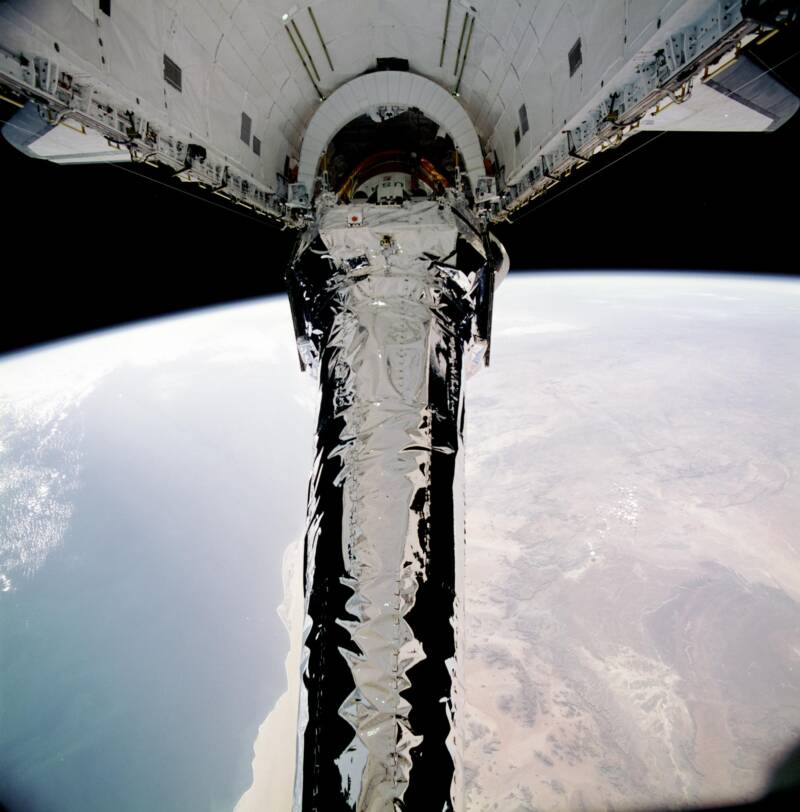
NASAChandra being deployed from the space shuttle payload bay.
In honor of Chandra's 25th birthday, researchers emphasized how important the X-ray telescope has been for understanding cosmic events.
"For a quarter century, Chandra has made discovery after amazing discovery," Pat Slane, director of the Chandra X-ray Center at the Smithsonian Astrophysical Observatory, said in a statement. "Astronomers have used Chandra to investigate mysteries that we didn't even know about when we were building the telescope — including exoplanets and dark energy."
In particular, Chandra's X-ray capabilities have allowed it to locate extremely hot objects and energetic processes in the universe. It is particularly adept at documenting exploded stars, evidence of black holes, and planets beyond our solar system.
For example, when Chandra observed Cassiopeia A, its X-ray analysis revealed a neutron star left over during the explosion and the presence of "superfluid," suggesting that the original star may have turned inside out.
In the Cat's Paw Nebula, Chandra has documented the creation of new stars, shedding greater light on their fascinating evolution.
According to Harvard University, Chandra's observations have led to "over 700 PhDs and [have] supported a diverse talent pool of more than 3,500 undergraduate and graduate students, about 1,700 postdocs, and over 5,000 unique principal investigators throughout the U.S. and worldwide."
Additionally, the telescope has inspired 10,000 peer-reviewed papers with almost half a million citations, making it "one of the most productive NASA missions in astrophysics," Harvard wrote.
Unfortunately, Chandra is at risk of ceasing operations given talks of budget cuts at NASA. With no cheaper alternative currently available, the loss of Chandra could be a huge blow to the scientific community.
"The loss of Chandra, at present, would be devastating to not just X-ray astronomy, but to most of astronomy," Slane stated, according to CNN. "Operation into the next decade would — in addition to continuing to produce top-tier science — provide a framework in which NASA could plan for a natural continuation and growth of the U.S. X-ray astronomy program."
After perusing these stunning Chandra Observatory photos, check out these 21 amazing images of Earth from space. Then, read the strange story of Félicette, the first cat in space.



